The eclipses in 2017 don't include great lunar eclipses, with a deep penumbral event on February 11th and a partial on August 7th. But the solar offerings are much better, with an annular observable from the Southern Hemisphere on February 26th and the Big One — a total solar eclipse crosses the continental U.S. — on August 21st.
Any list of nature's grandest spectacles would certainly include eclipses of the Sun and Moon. Up to seven of them can take place in one year, though the last time that happened was 1982. The fewest possible is four, as will be the case in for eclipses in 2017. Neither of the lunar eclipses is total (though we'll have two of those in 2018). But both of 2017's solar eclipses are "central" events: one annular and one total.
Why Do Eclipses Happen?
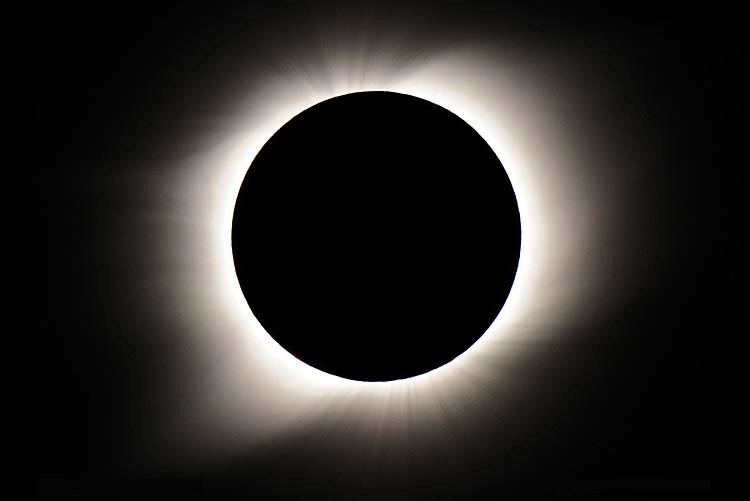
Fred Espenak
A solar eclipse, such as the one pictured at right, occurs only at new Moon, when the lunar disk passes directly between us and the Sun. Conversely, a lunar eclipse takes place during full Moon, when our satellite passes through Earth's shadow.
These alignments don't happen at every new and full Moon because the lunar orbit is tipped about 5° to Earth's orbital plane — only occasionally do the Sun, Earth, and Moon line up exactly enough for an eclipse to occur. (The technical name for that, by the way, is syzygy.)
Three types of lunar eclipse are possible (total, partial, and penumbral) depending on how deeply the full Moon plunges into or near the umbra, our planet's dark, central shadow.
If it goes all the way in, we see a total lunar eclipse that's preceded and followed by partial phases. That was the case during the widely viewed event in September 2015, which marked the conclusion of a series of four consecutive total lunar eclipses in 2014–15! Such eclipse tetrads are not common — the last one occurred during 2003–04, but the next won't begin until 2032.
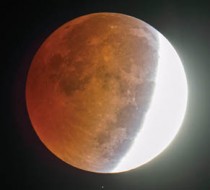
Johnny Horne
If the Moon skims part way into the umbra, only the partial phases occur. And if its disk passes just outside the umbra, it still encounters the weak penumbral shadow cast by Earth. Both of these geometries will be in play during 2017's two lunar eclipses.
Fortunately, every lunar eclipse is observable anywhere on Earth where the Moon is above the horizon. (But there's still an element of luck involved — after all, the sky has to be clear!)
However, solar eclipses more tightly restrict where you can see them because the Moon casts a smaller shadow than Earth does. If the Moon completely hides the Sun, the eclipse is considered total. With its brilliant disk completely covered, the Sun's ghostly white outer atmosphere is momentarily revealed for durations from seconds to several minutes. In November 2013, for example, planeloads of eclipse-chasers converged in a remote portion of northern Kenya to watch just 11 seconds of totality.
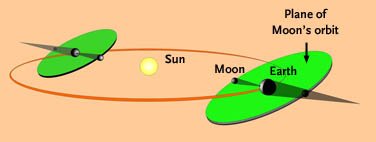
Jay Anderson
A completely eclipsed Sun can be viewed only from a narrow track or path on Earth's surface that's typically just 100 miles (160 km) wide. Outside of that path, about half of the daylit hemisphere of Earth is able to watch a partial eclipse as the Moon obscures a portion of the Sun.
Occasionally the Moon passes directly in front of the Sun but doesn't completely cover it. This circumstance is known as an annular eclipse, so-called because you can see a ring, or annulus, of sunlight surrounding the lunar disk. But an annular's path is likewise narrow, and outside of it observers see only a partial cover-up.
The Four Eclipses in 2017
Below are brief descriptions of this eclipses in 2017 of the Sun and Moon. You'll find more details Sky & Telescope magazine as the date of each draws near. Times are in Universal Time (UT) except as noted.
February 11: Penumbral Lunar Eclipse
A penumbral eclipse is a tease, with none of the Moon entering the much darker core of Earth's shadow, the umbra. Still, the one that occurs on February 10th (for North America) will be about the best penumbral eclipse possible, as the Moon's northern limb will miss the umbra by only about 100 miles (160 km). So the penumbral shading will be obvious.
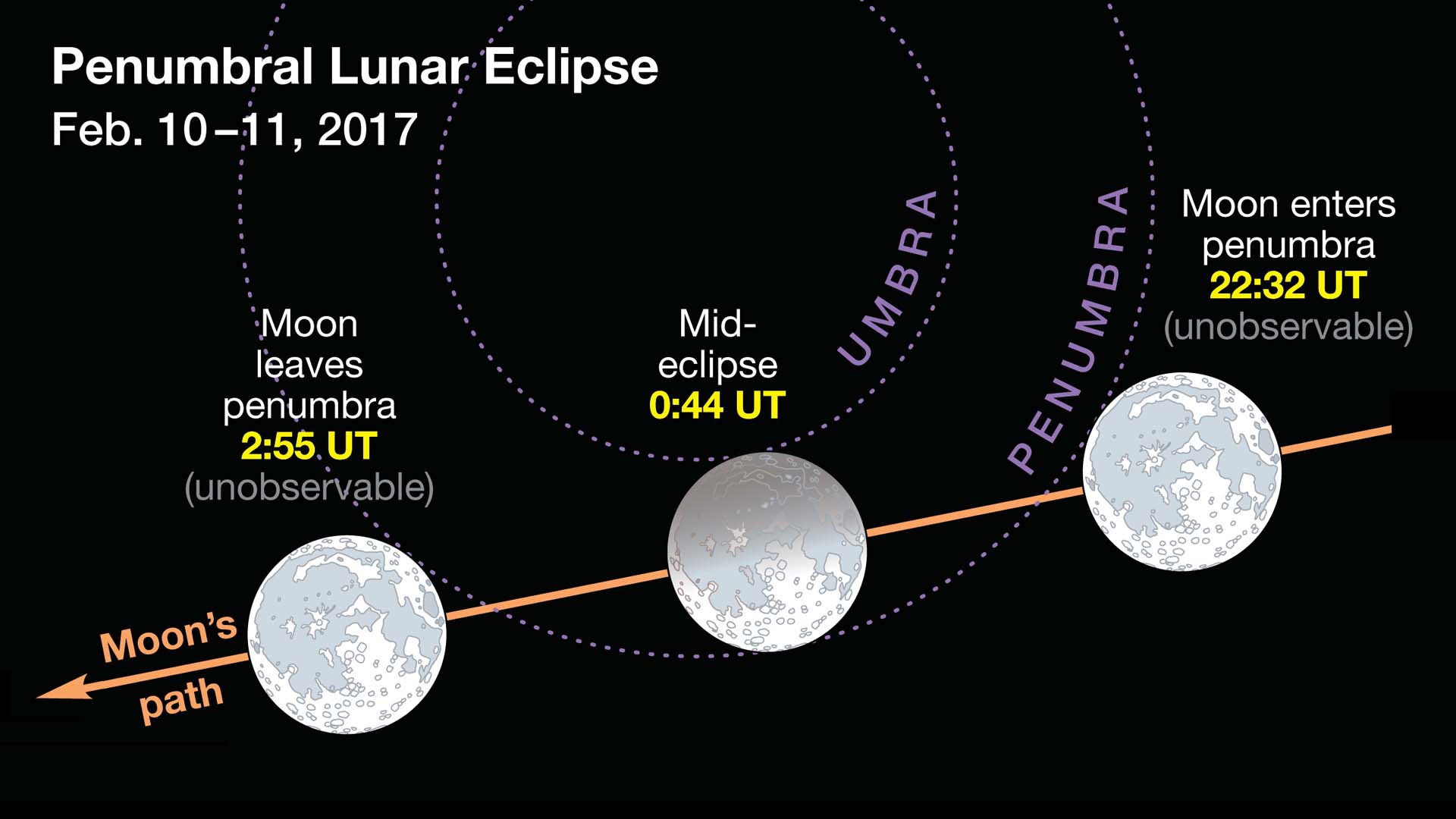
Sky & Telescope diagram
Those in eastern North America, and all of Central and South America, are well positioned. In the U.S. Northeast the whole event is observable, with mid-eclipse at 7:44 p.m. Eastern Standard Time. Farther west, the eclipse peaks at or soon after moonrise - or before moonrise for the Far West. For Europe, Africa, and western Asia, the eclipse occurs with the Moon will be high up during the early morning hours of February 11th.
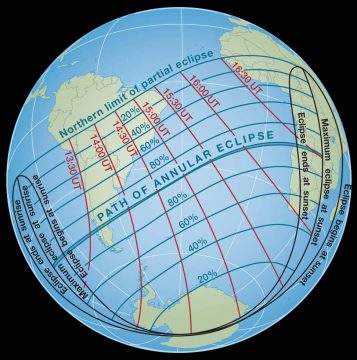
Sky & Telescope diagram; source: Fred Espenak
February 26: Annular Solar Eclipse
It's not uncommon for a lunar eclipse (at full Moon) to be followed two weeks later by a solar eclipse (new Moon), or vice versa. On February 26th, a wire-thin annular eclipse of the Sun is observable along a narrow path — at most just 31 km (19 miles) wide — that crosses southern Chile and Argentina, the South Atlantic, Angola, and the Zambia-Congo border.
This is very nearly a total eclipse (98½% of the Sun's disk gets covered) because the Moon will be only about 5 days from perigee. Maximum occurs close to 13:38 UT (early morning) in South America and 16:28 UT (just before sunset) in Africa.
A partial eclipse will grace much larger sections of South America, Africa, and Antarctica.
August 7: Partial Lunar Eclipse
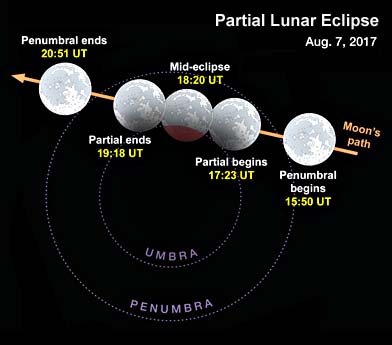
Sky & Telescope diagram
North Americans find themselves out of luck for a partial cover-up of the Moon on August 7th, but those in eastern Europe and Africa, all of Asia, and Australia have excellent seats. The Moon's southern limb clips Earth's umbra, going about a quarter of the way in, with mid-eclipse at 18:20 UT. This glancing umbral encounter takes nearly 2 hours from start to finish. Before and after this window, keep alert for evidence of dusky penumbral shading on the the Moon's southern limb. It should become obvious within about 30 minutes of the beginning and end of the partial phases.
August 21: Total Solar Eclipse
The eclipses in 2017 fourth and final eclipse is a very special one. Whenever the Moon covers the Sun, the narrow path of totality can be anywhere in the world — often traversing remote locations. But this year's event is very close to home for many of us, because the 70-mile-wide path of totality stretches from the Pacific to the Atlantic across the continental United States. The Moon's full shadow hasn't passed over any U.S. soil since 1991 (Hawai'i) nor across any part of the contiguous 48 states since 1979. Moreover, a total solar eclipse hasn't run coast to coast since 1918!
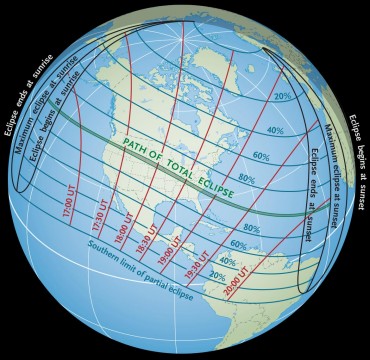
Sky & Telescope diagram / source: Fred Espenak
The last of the eclipses in 2017's event will be of modest duration, offering up to 2¾ minutes of totality. The path will cross parts of 14 states. It makes landfall along coast of north-central Oregon, where it will be mid-morning. Racing eastward at roughly 1 mile every 2 seconds, the lunar shadow cuts through central Idaho, Wyoming, Nebraska, and Missouri. (Totality lasts longest just south of Carbondale, Illinois.) The swath of darkness continues across Tennessee and South Carolina, exiting the mainland in mid-afternoon along the Atlantic coast northeast of Charleston. A tiny, inaccessible nub of southern Montana is in the path, as is a reachable spot on the southwestern corner of Iowa.
Not all locations are equally likely to see totality. Canadian meteorologist Jay Anderson has taken a look at the chances for clear skies on eclipse day, based on cloud-cover statistics drawn from historical records. According to Anderson, the best weather bets would be a relatively remote stretch in north-central Oregon or a big swath through the U.S. heartland running from Nebraska to Tennessee.
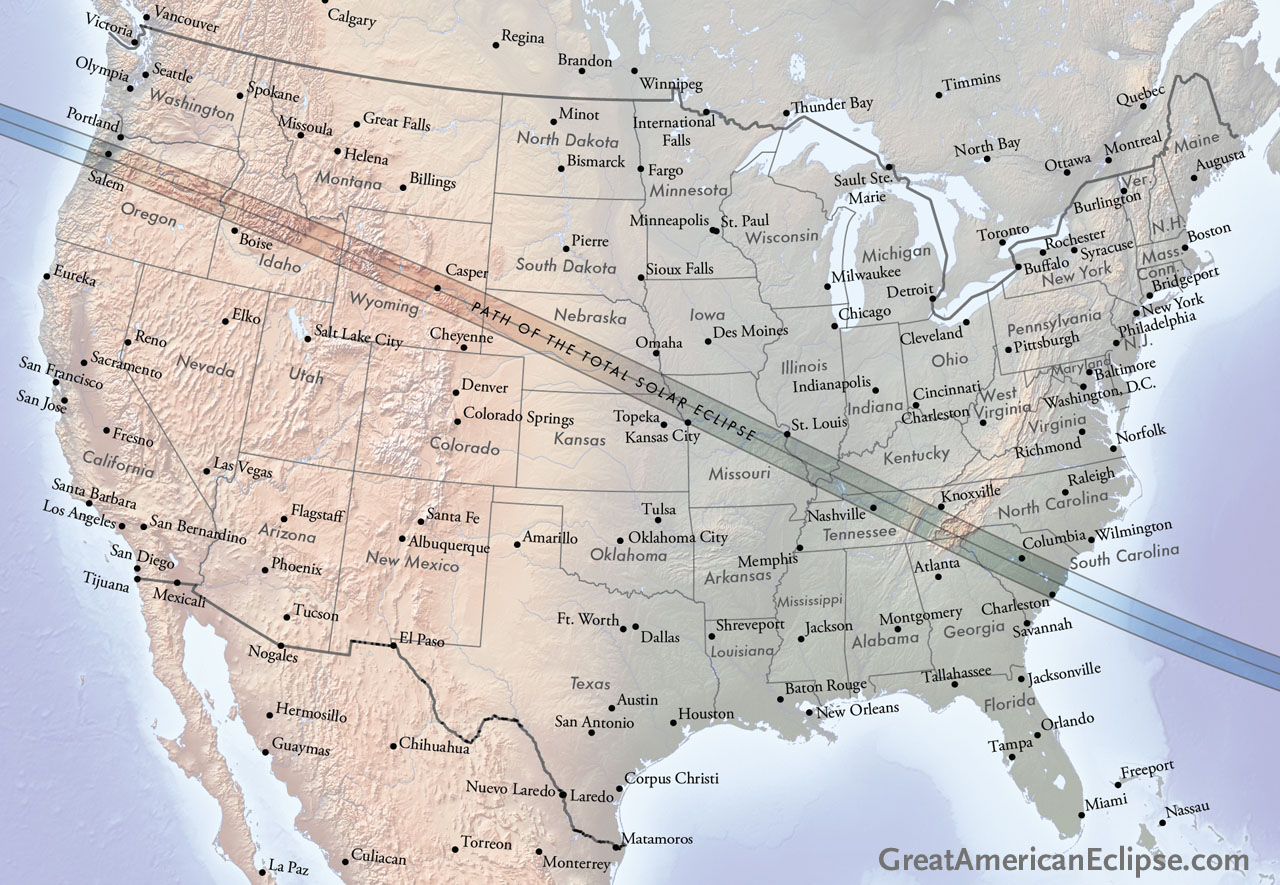
Michael Zeiler / GreatAmericanEclipse.com
Meanwhile, everyone in North America (and especially in the continental U.S.) will experience a deep partial eclipse that day. For example, the Moon covers about 60% of the Sun's disk for those viewing from Los Angeles or Boston, 78% from Miami, 87% from Chicago, and 92% from Seattle or Denver.
To see if your town lies along the path — and to get the times and circumstances no matter where you live — check out our interactive eclipse widget, provided by the makers of SkySafari. Plus, find out information for getting to the eclipse path, where to stay (even if you're making last-minute plans), what to bring, weather prospects, and a lot more at Sky & Telescope's 2017 solar eclipse portal. You can also check out our FREE eBook on eclipse photography!
Looking Ahead to 2018
The mix of events next year will offer circumstances flipped from the eclipses in 2017: there'll be two total lunar eclipses (on January 31st and July 27th) — but no central solar eclipses. Umbraphiles will have to settle for three partial solar eclipses on February 15th, July 13th, and August 11th. None of these five events are especially favorable for observers in North America unlike the eclipses in 2017.
 0
0








